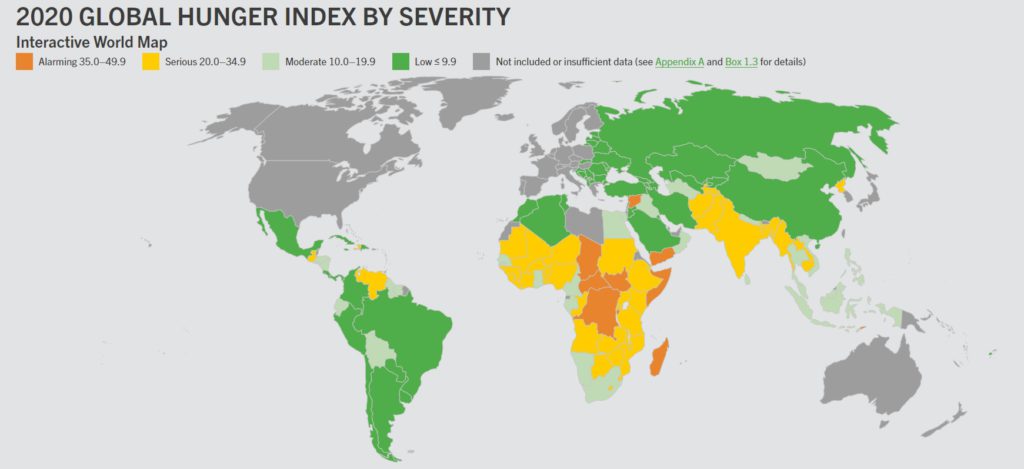Brazil and China on the right track. Global Hunger Index 2020 still reveals many problems in 51 countries.
The fifteenth edition of the Global Hunger Index (GHI) shows some improvements in several countries since the beginning of the millennium, however, the Zero Hunger Goal in 2030 seems to be out of reach if there are no deep and drastic reforms in the different systems food. In addition, the current pandemic context may even double the number of people exposed to hunger.
Currently, the situation is classified as moderate, whereas in 2000, the situation was considered serious. However, the average now achieved does not address the serious and persistent challenges that many countries and regions face, as well as the potential for the situation to worsen in the future.

In Portuguese-speaking countries, the problems are also great. In Timor-Leste, which has chronic food insecurity, agricultural productivity is low and food consumption is inadequate. Many people depend on unique, low-value livelihood strategies. Basic sanitation infrastructure, drinking water, roads, irrigation, schools and health are precarious, as well as the country’s level of financial and human capital. It is estimated that 30.9% of the population is malnourished and that infant mortality is in the order of 4.6%.
The same seems to be happening in Guinea-Bissau where, despite not being able to gather all the data to calculate the country’s GHI due to the Covid-19 pandemic, the situation is classified as serious. Information on the percentage of malnutrition in the population of Guinea-Bissau has not been revealed. Infant mortality is estimated to be 8.1%.
Angola and Mozambique showed some progress compared to 2000. Even so, in both Portuguese-speaking countries the situation is considered serious when it was extremely alarming in the past. It is estimated that, in Angola, 18.6% of the population is malnourished and that infant mortality is at 7.7%. In Mozambique, it is estimated that 32.6% of the population is malnourished and infant mortality is 7.3%.
Significant improvements have seen Brazil and China over the past 20 years. Today, in both giants, hunger is considered low, although in the case of the South American country there is a large part of the population living in conditions of poverty considered to be worrying. In Brazil, 2.5% of the population is malnourished and the infant mortality rate is 1.4%. China, for its part, less than 2.5% of the population is malnourished, with infant mortality being around 0.9%. The worst performance in the country is in the growth of children, where 5.5% show inadequate development.
Portugal, São Tomé and Príncipe and Cape Verde are not included in the index presented this week.
Read more in portuguese



